The first Georg Jensen flagship store was a wooden cabinet. A replica of it hangs proudly on the wall of the Georg Jensen silversmith workshop (called a smithy) just by the entrance, inviting those who enter to learn the full story of the brand. The original cabinet sits at Designmuseum Denmark. In the smithy, few intricate silver jewelry pieces are pinned inside the clear-doored cabinet, representing the first items Georg Jensen himself made and sold on busy squares to passers-by in 1904.
Jensen, who trained as a goldsmith and then as a sculptor, found instant success selling his work in Copenhagen. After the jewelry came hollowware: silver teapots, milk jugs, sugar bowls, and other hollow service ware. Soon, he set up the smithy where silversmiths work to this day.
Although silver makes up only 5% of Georg Jensen’s annual sales, it is considered the beating heart of the business. While the company does own a factory in Thailand where they produce the bulk of their other products, all silver pieces are made by hand in the smithy in Copenhagen.
 |
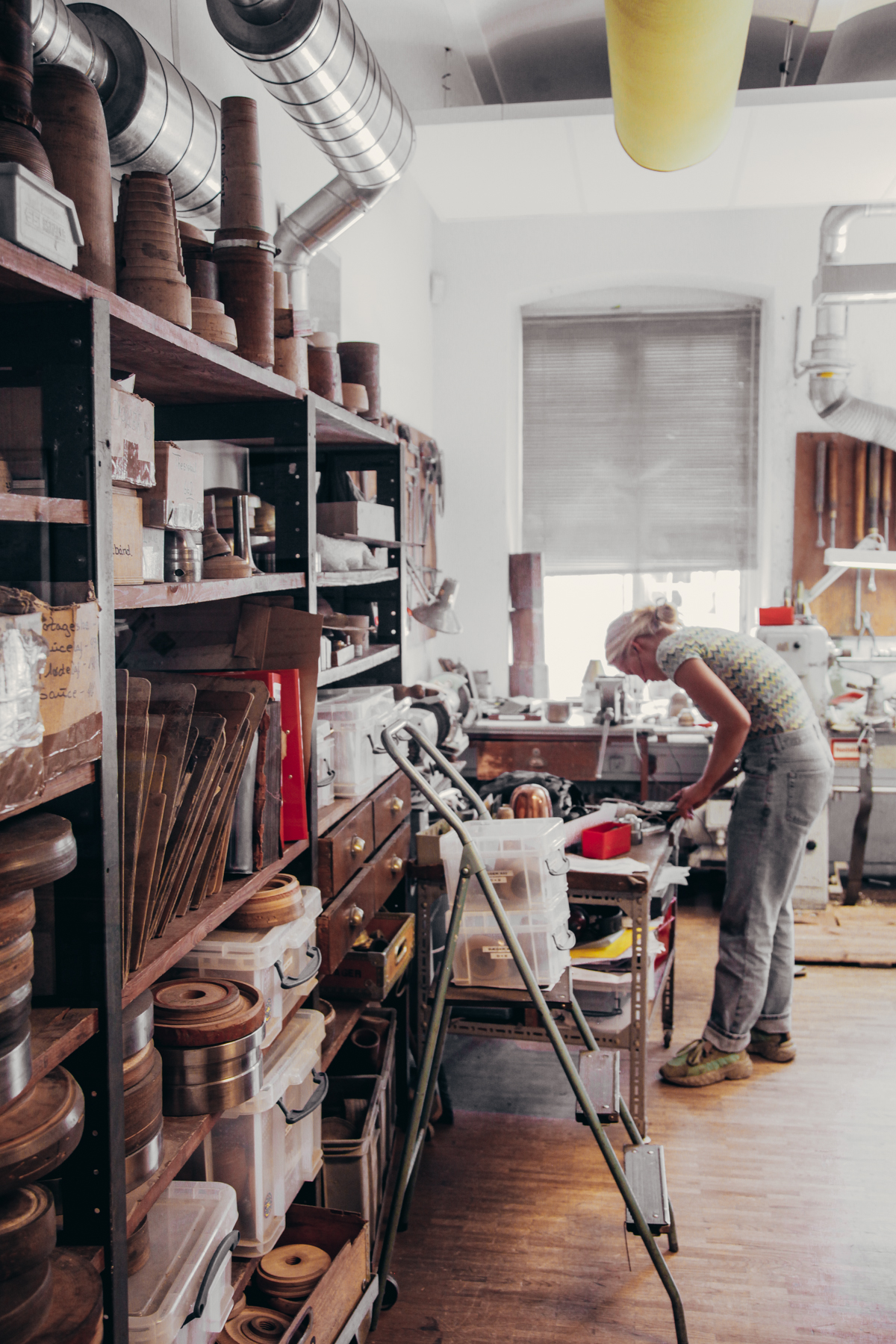 |
 |
|
The Georg Jensen archivist, Ida Heiberg Bøttiger, explains not only the brand’s history, but also how the smiths work. In the front room, artisans create detailed work including many classics such as the Grape Bowl, an icon first introduced in 1918 and still in production today. Silversmiths work from detailed sketches made with the original pieces that are propped on their workshop tables. Each item can take from four to six months of full time work.
The larger pieces of silver are created in a separate area of the smithy. While all smithing is physical, the larger pieces require a great deal of labor. The 1041 Bowl, made from a single sheet of hammered fine silver, is a work of exquisite beauty. There are only two in the world, and they are based on a sketch from silver master Henning Koppel, first designed in 1954. Unhappy with the initial result, Koppel destroyed the piece and it was never made again until now, when the design was brought out of the archive for Henning Koppel’s centennial.
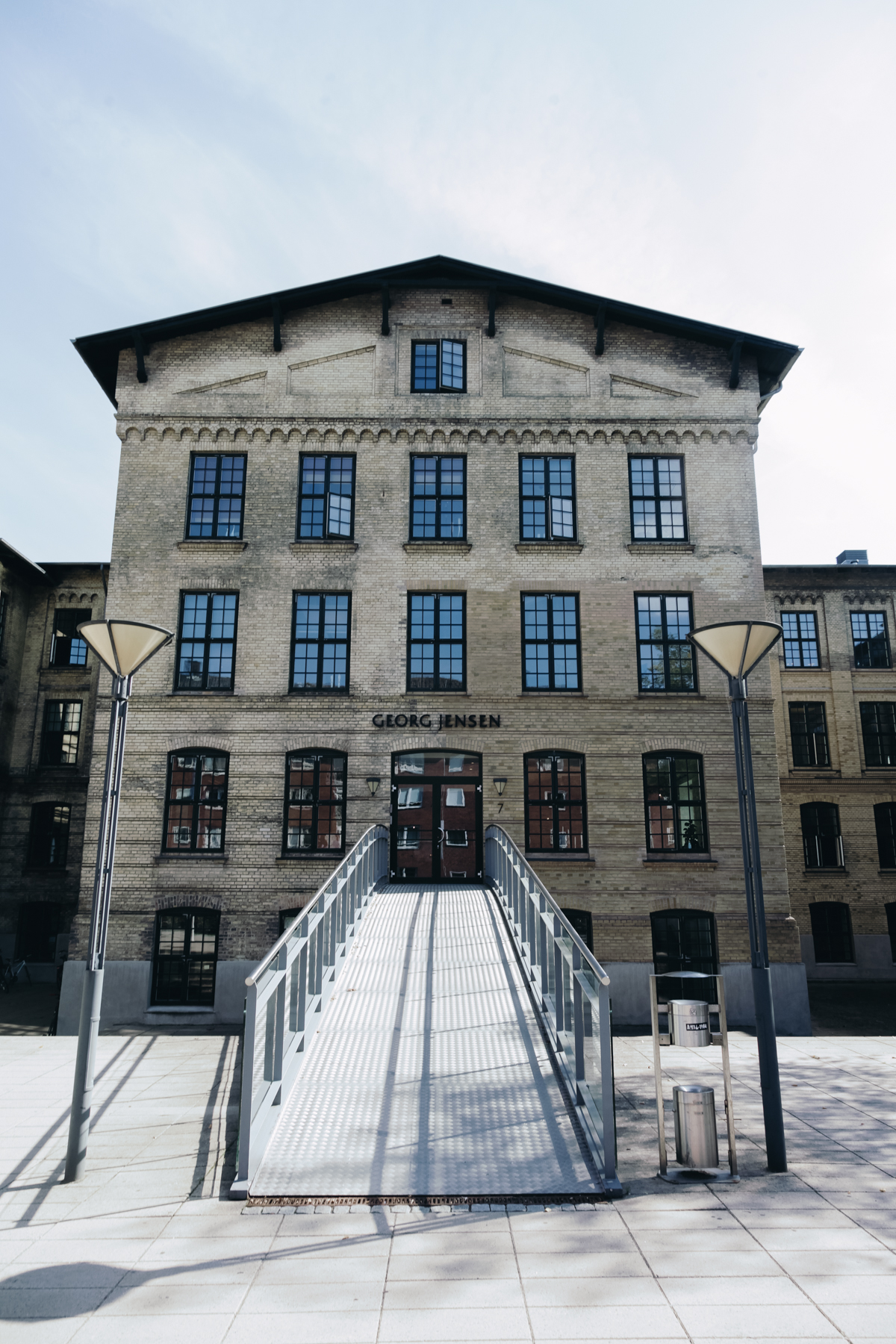 |
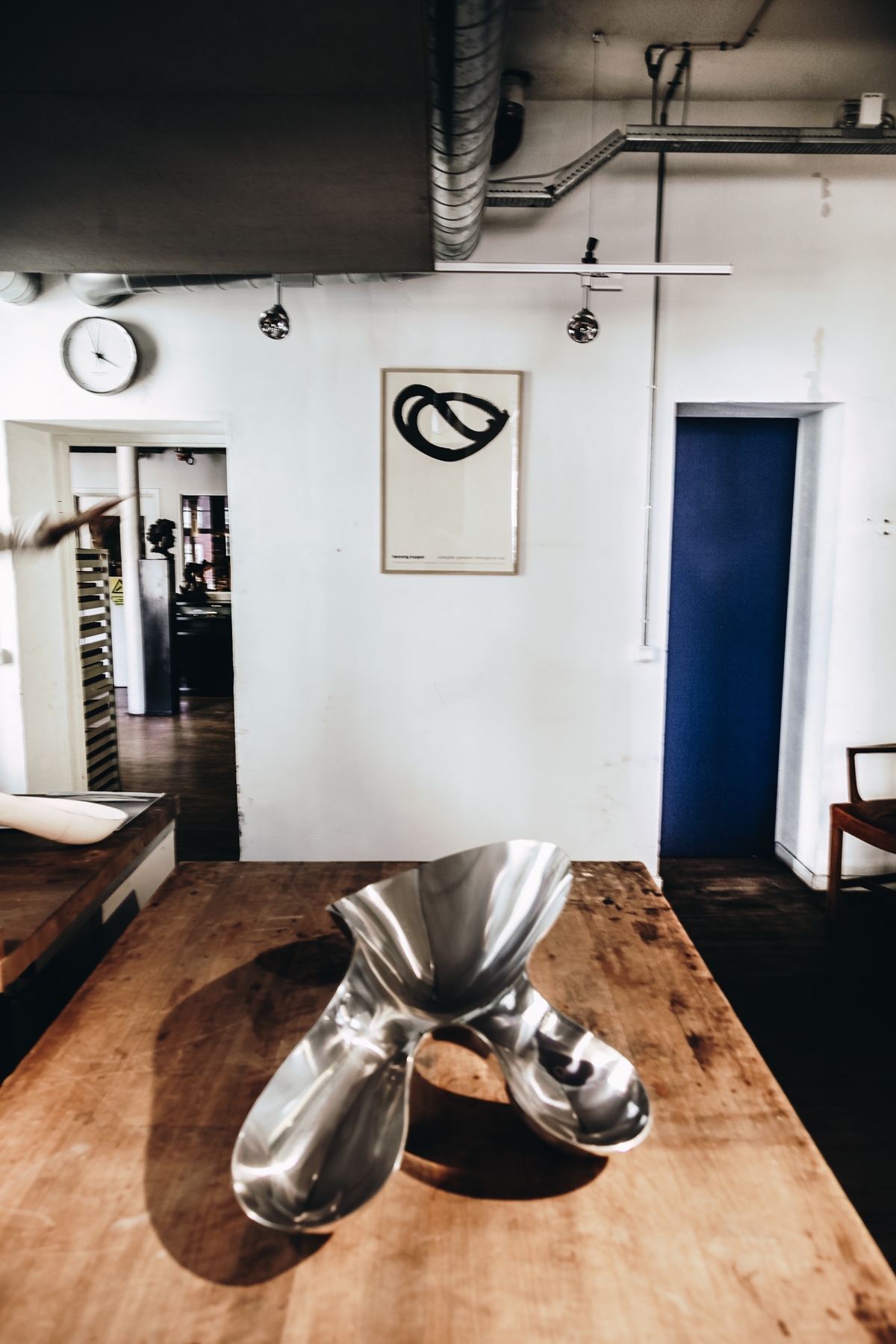 |
Respect for craftsmanship and heritage is fully on display throughout the workshop; there’s a reason some of these pieces have been in production for 100 years. Georg Jensen makes many items these days, from jewelry to watches to cutlery, but their silver is their core identity. We expect that in another century, the same pieces will still be in production.
Take a tour of the Copenhagen smithy to see Georg Jensen silver, jewelry, and silversmiths at work:
 |
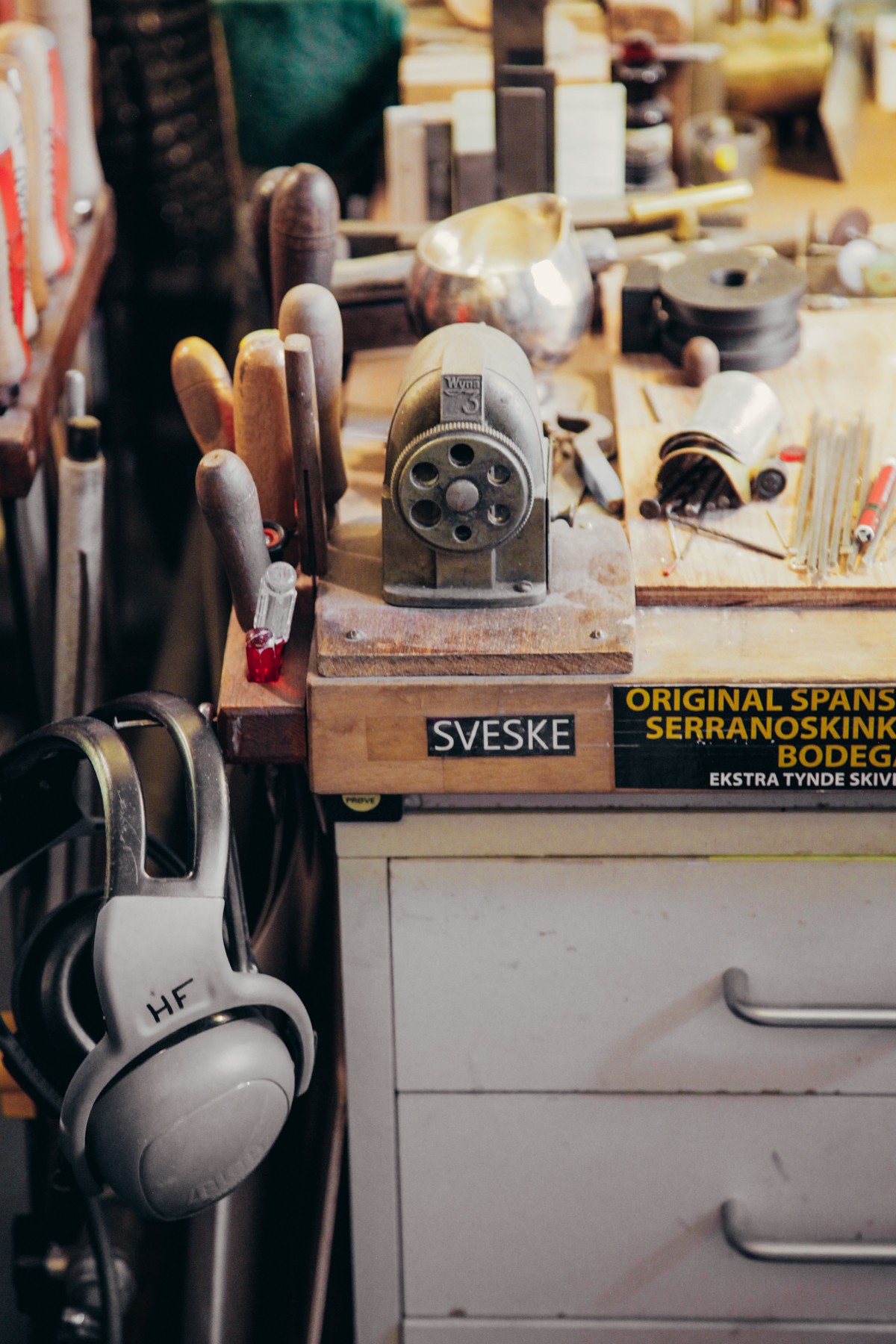 |
 |
|
 |
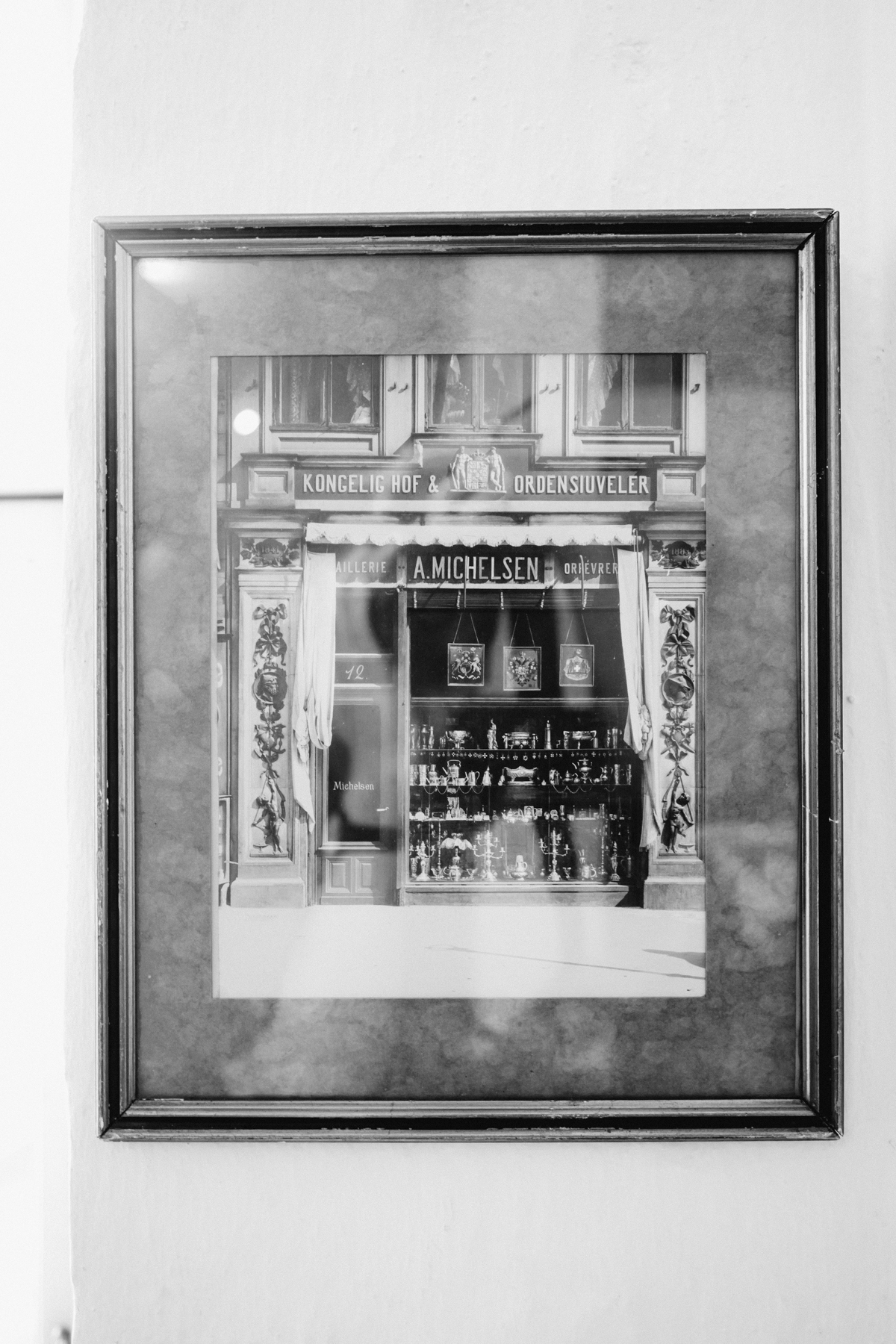 |
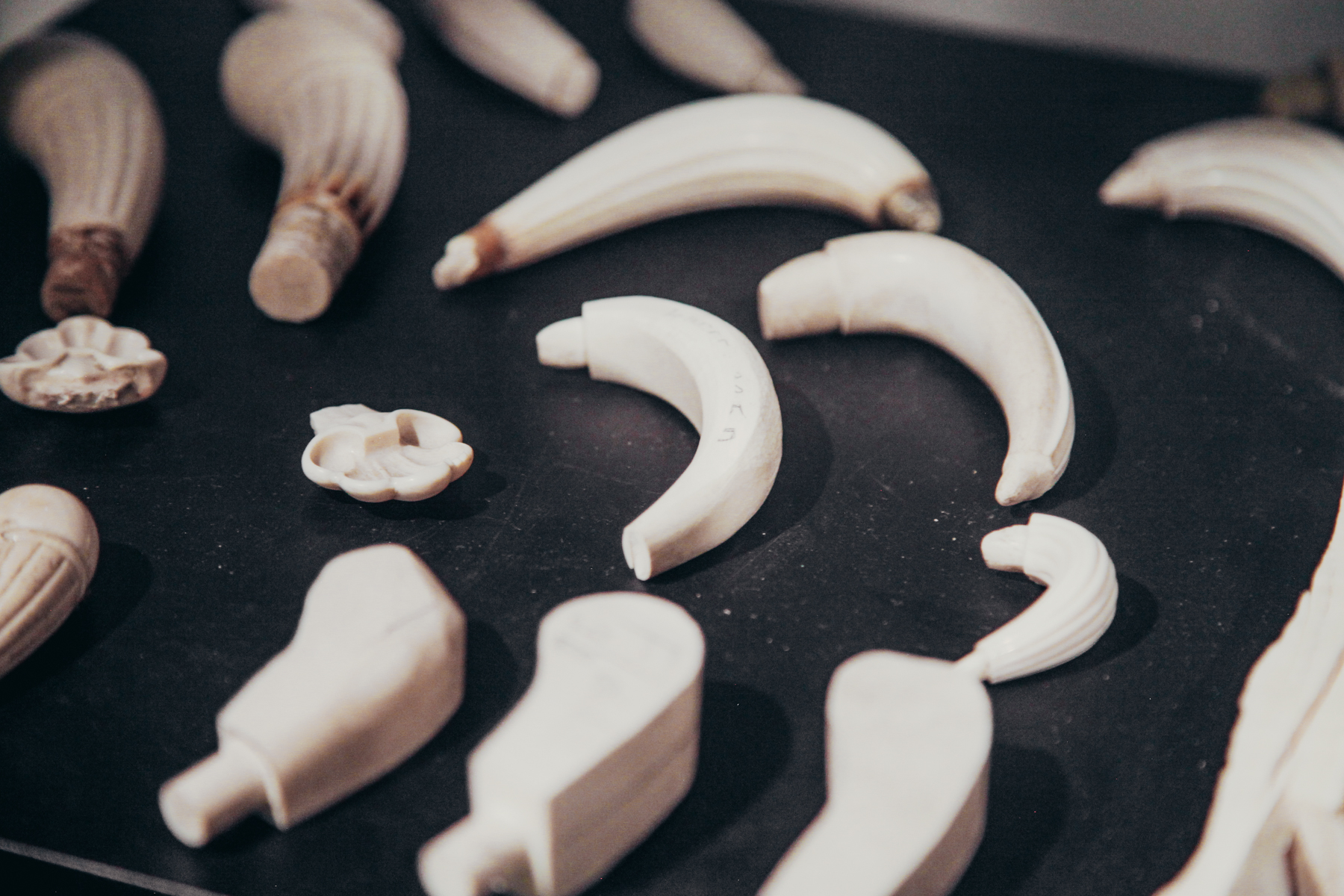 |
|
 |
 |
 |
|
 |
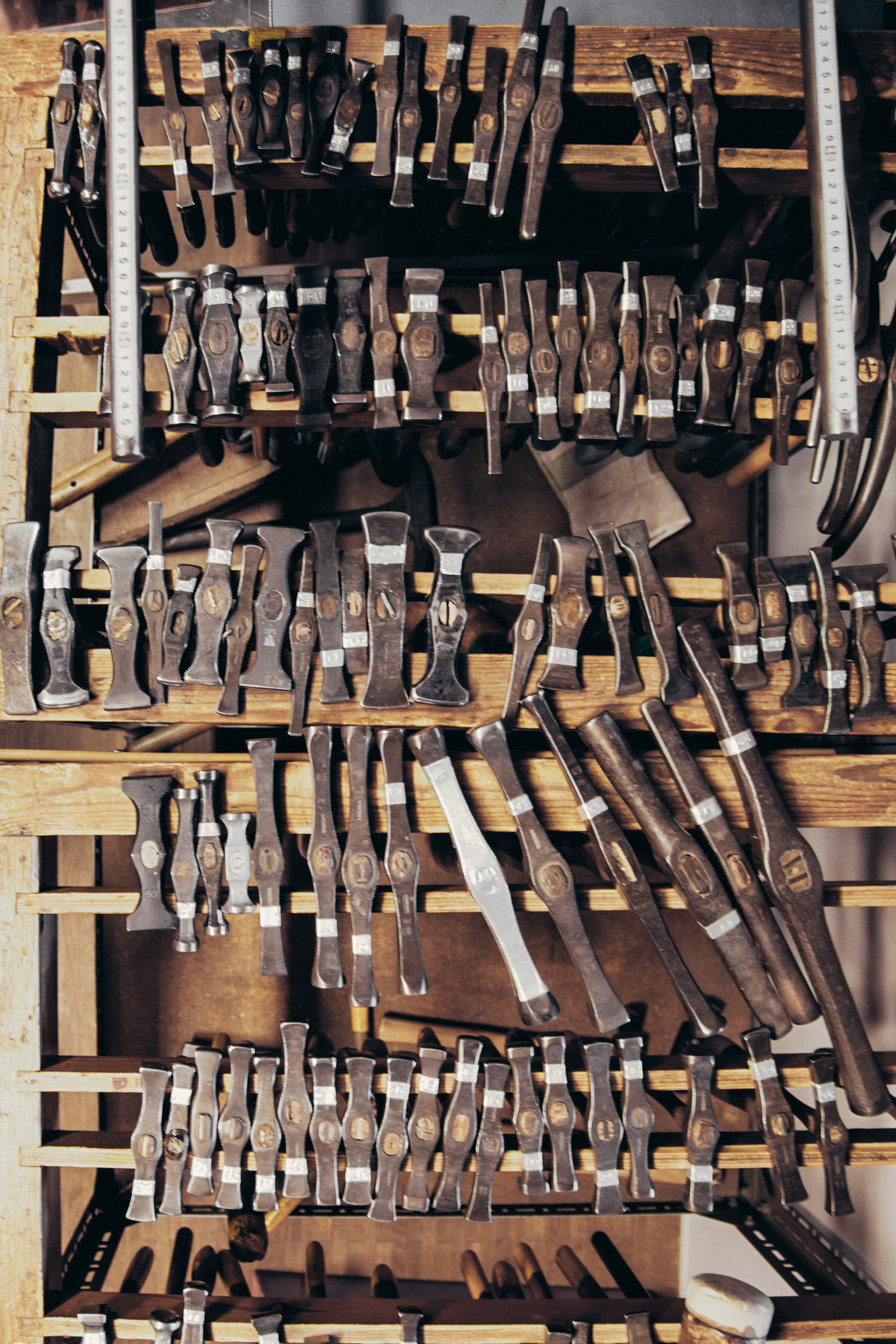 |
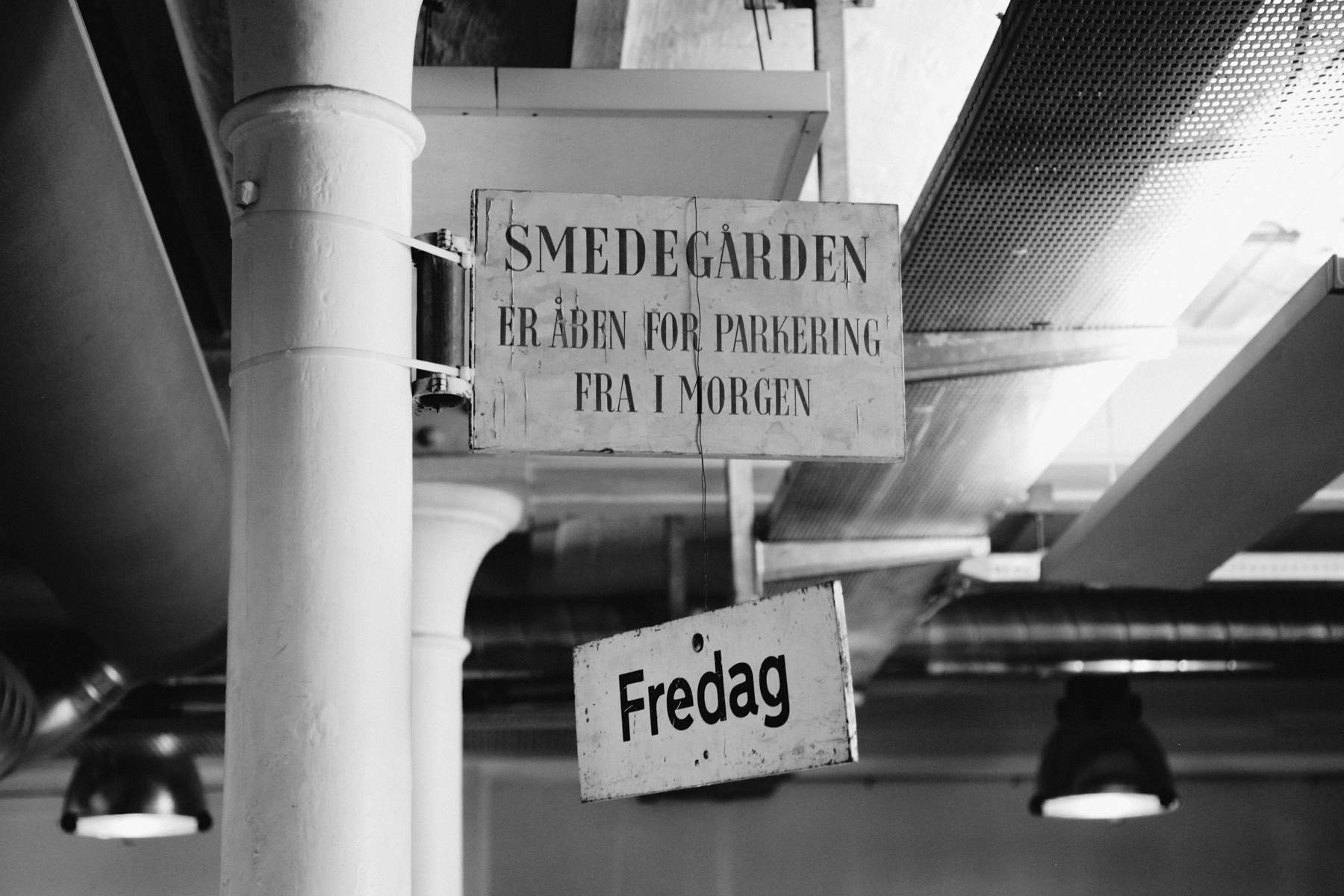 |
|
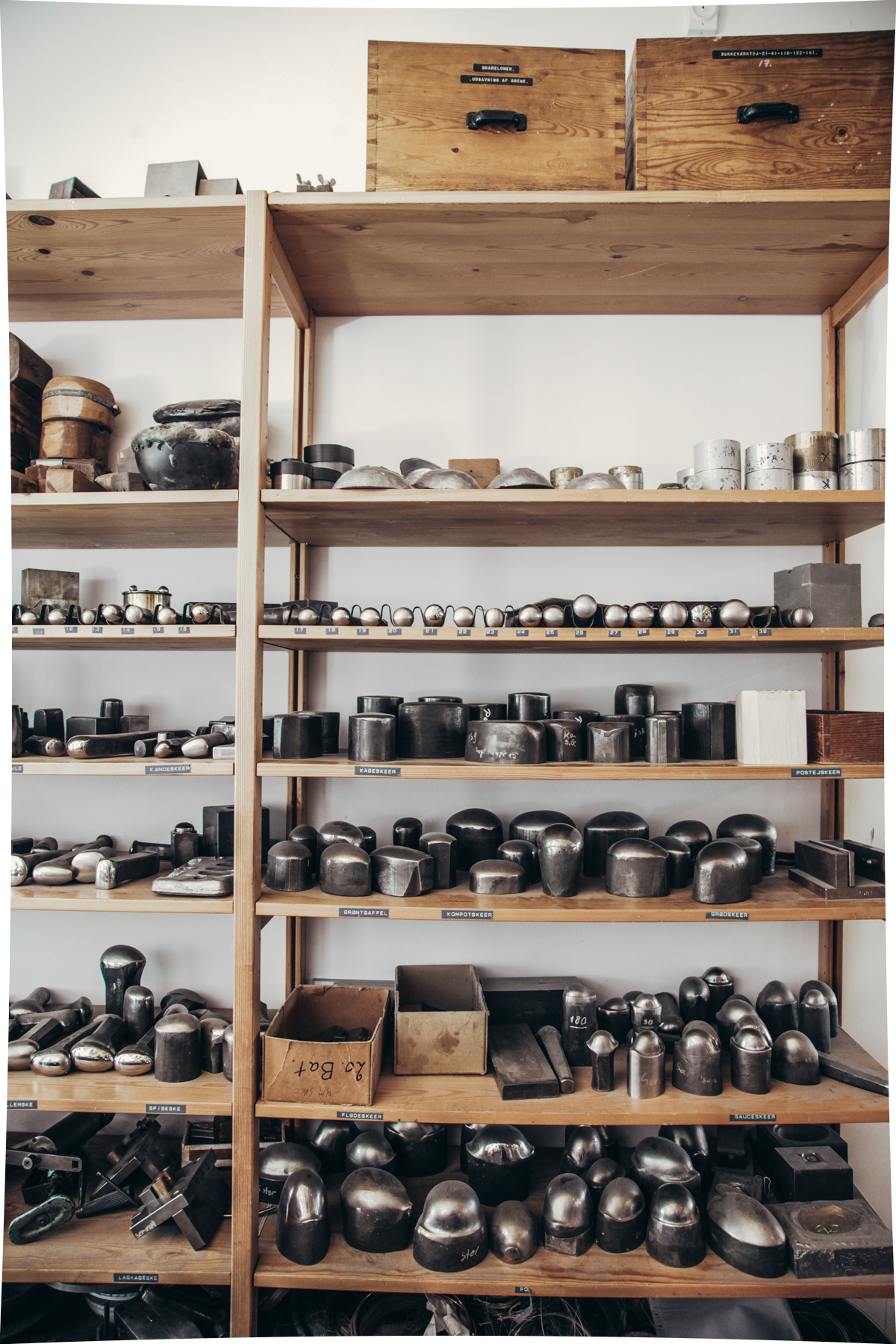 |
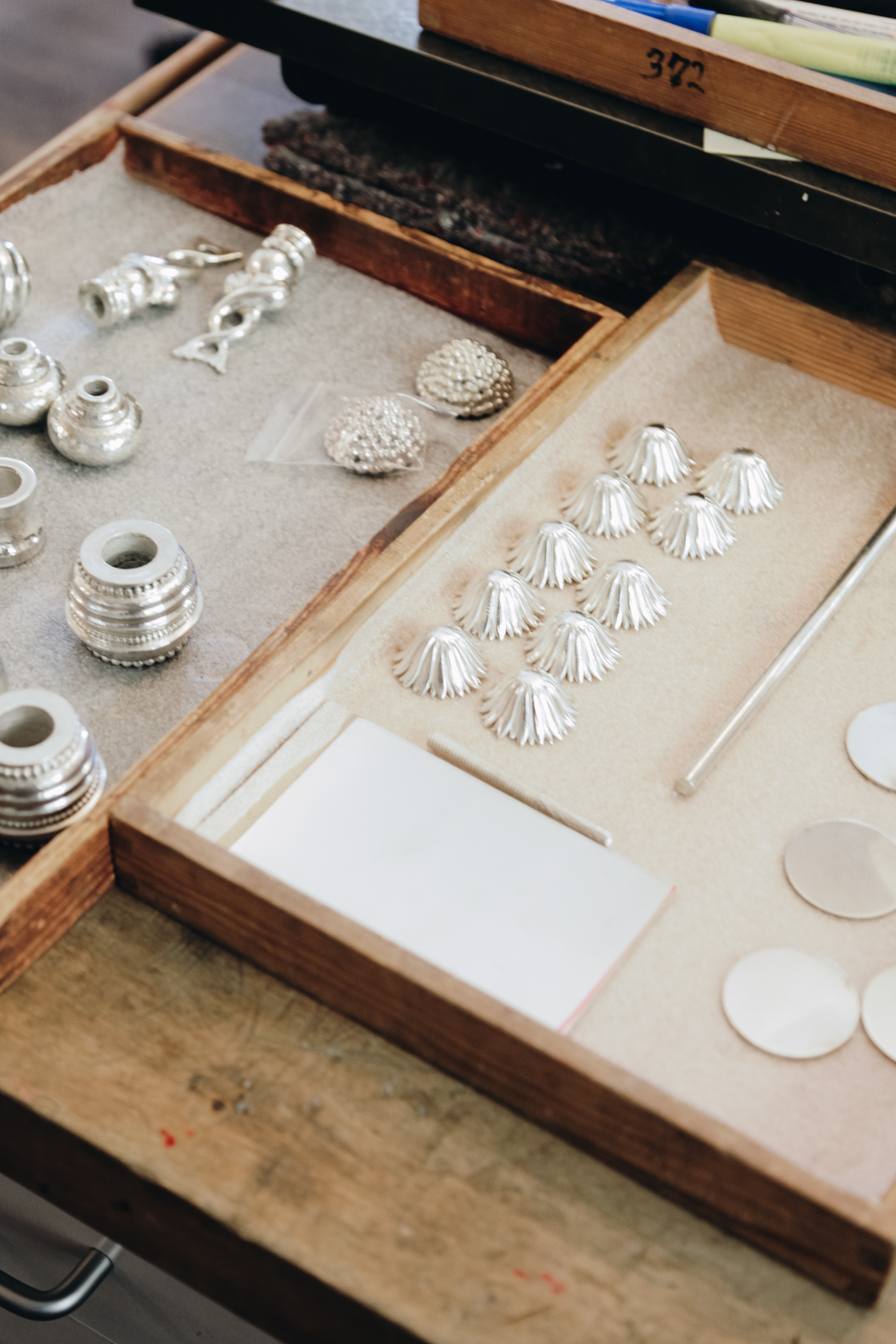 |
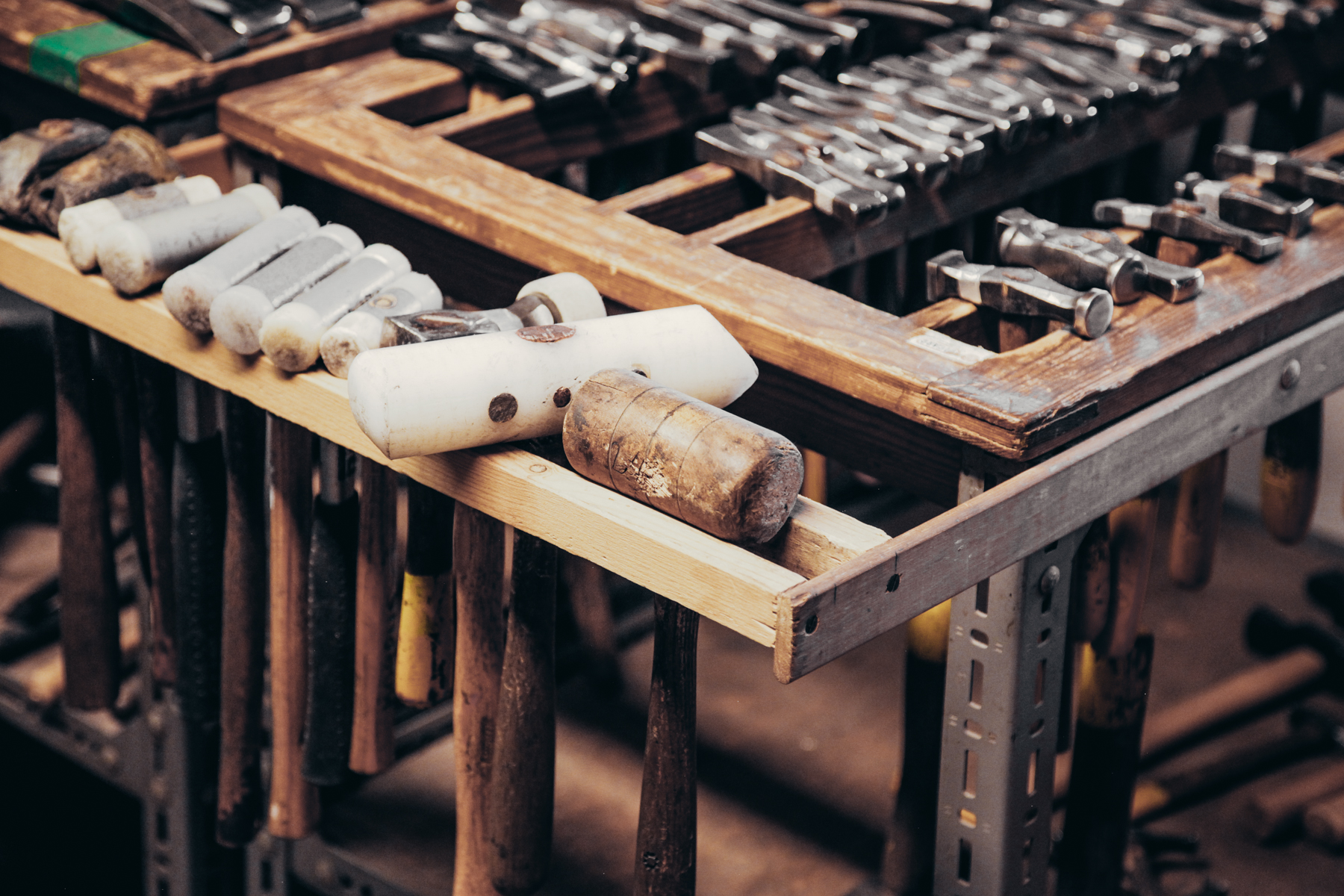 |
|
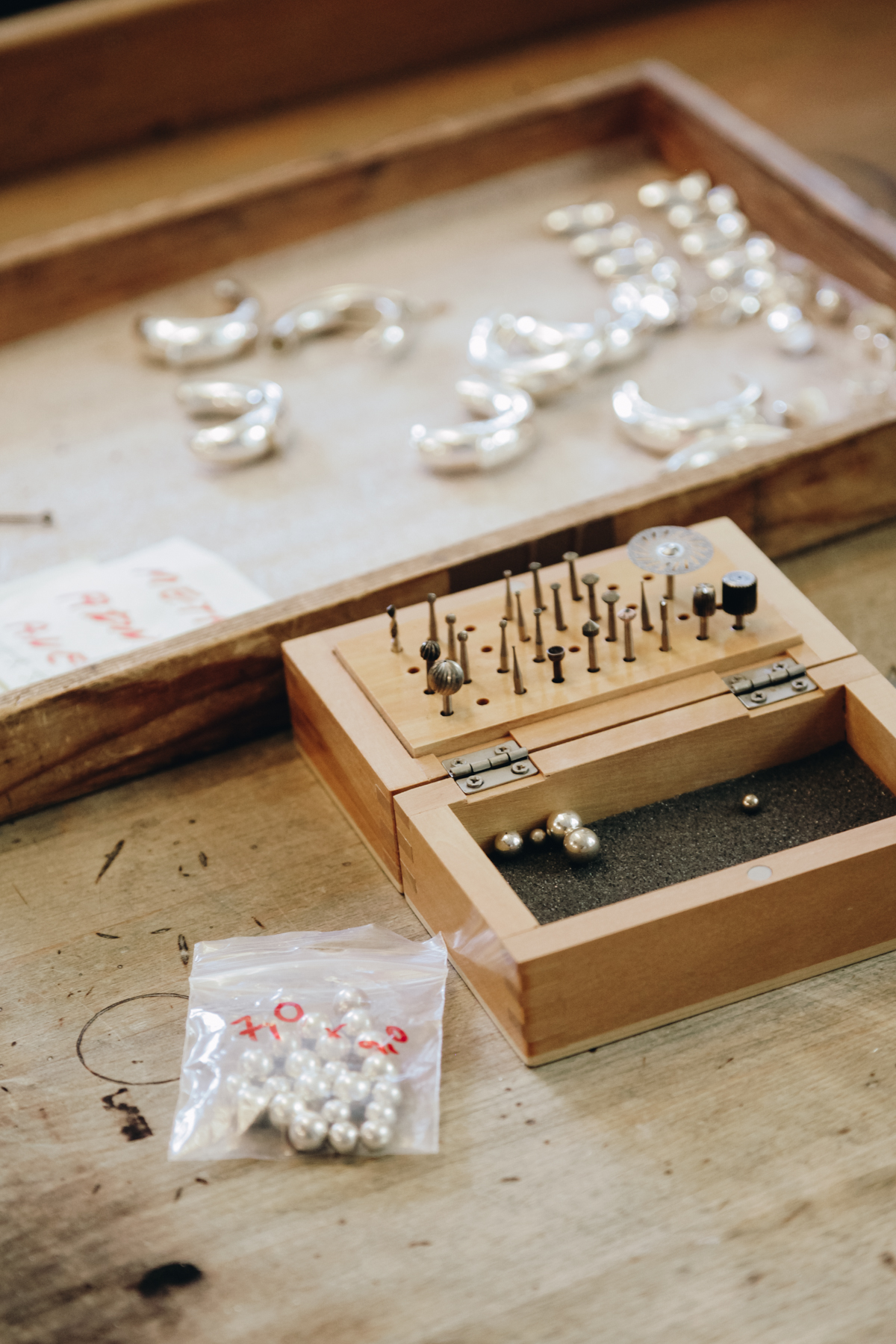 |
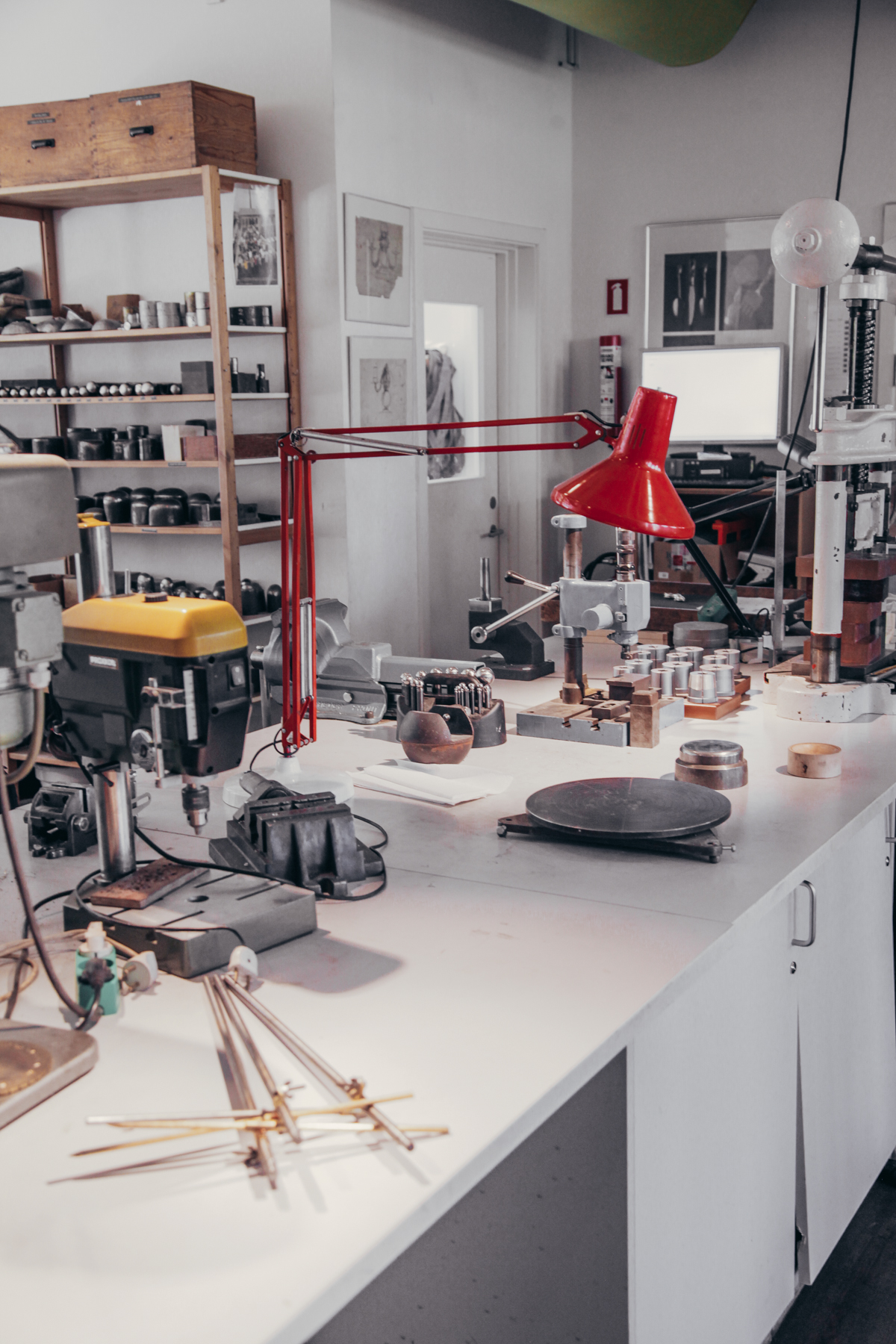 |
 |
|
 |
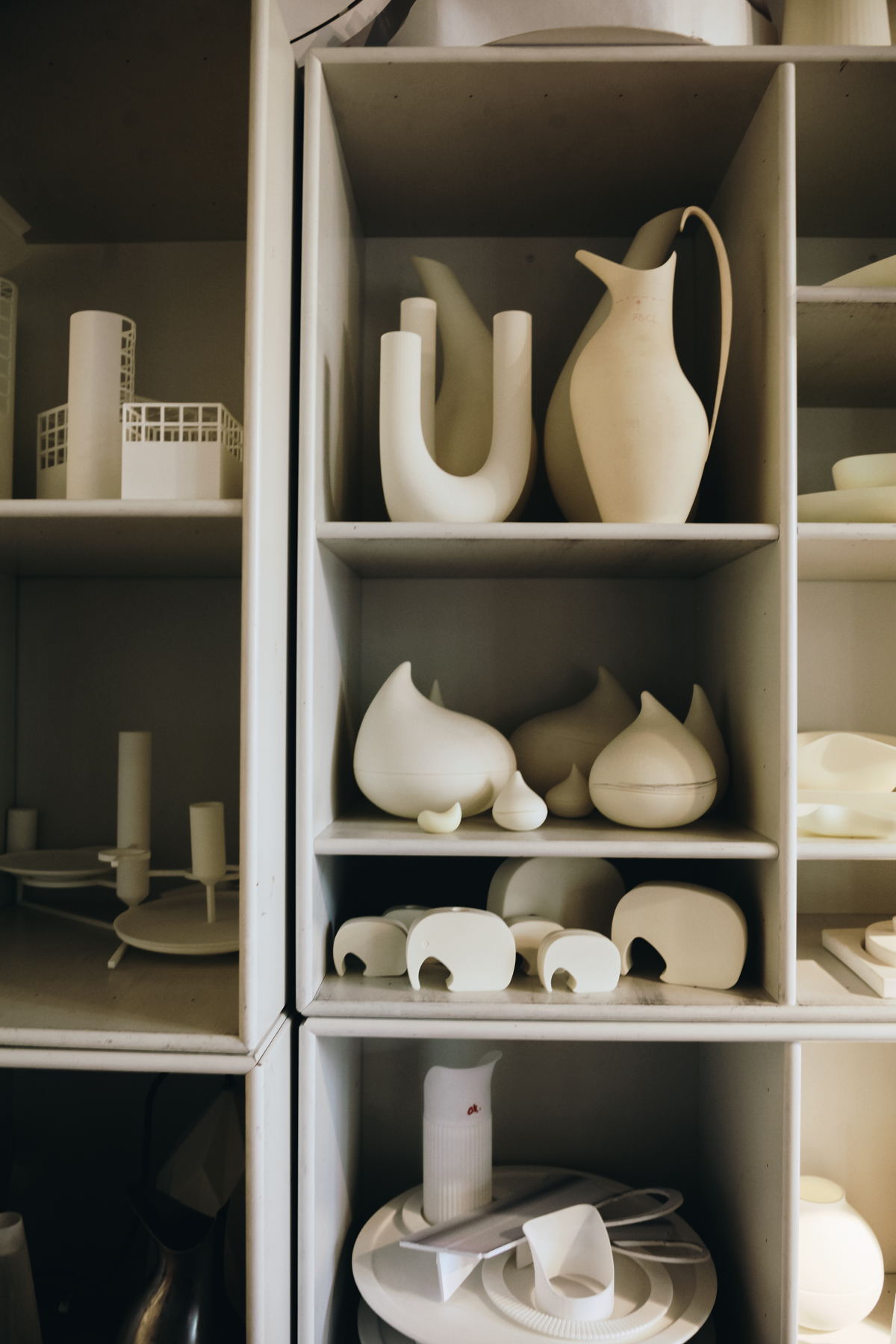 |
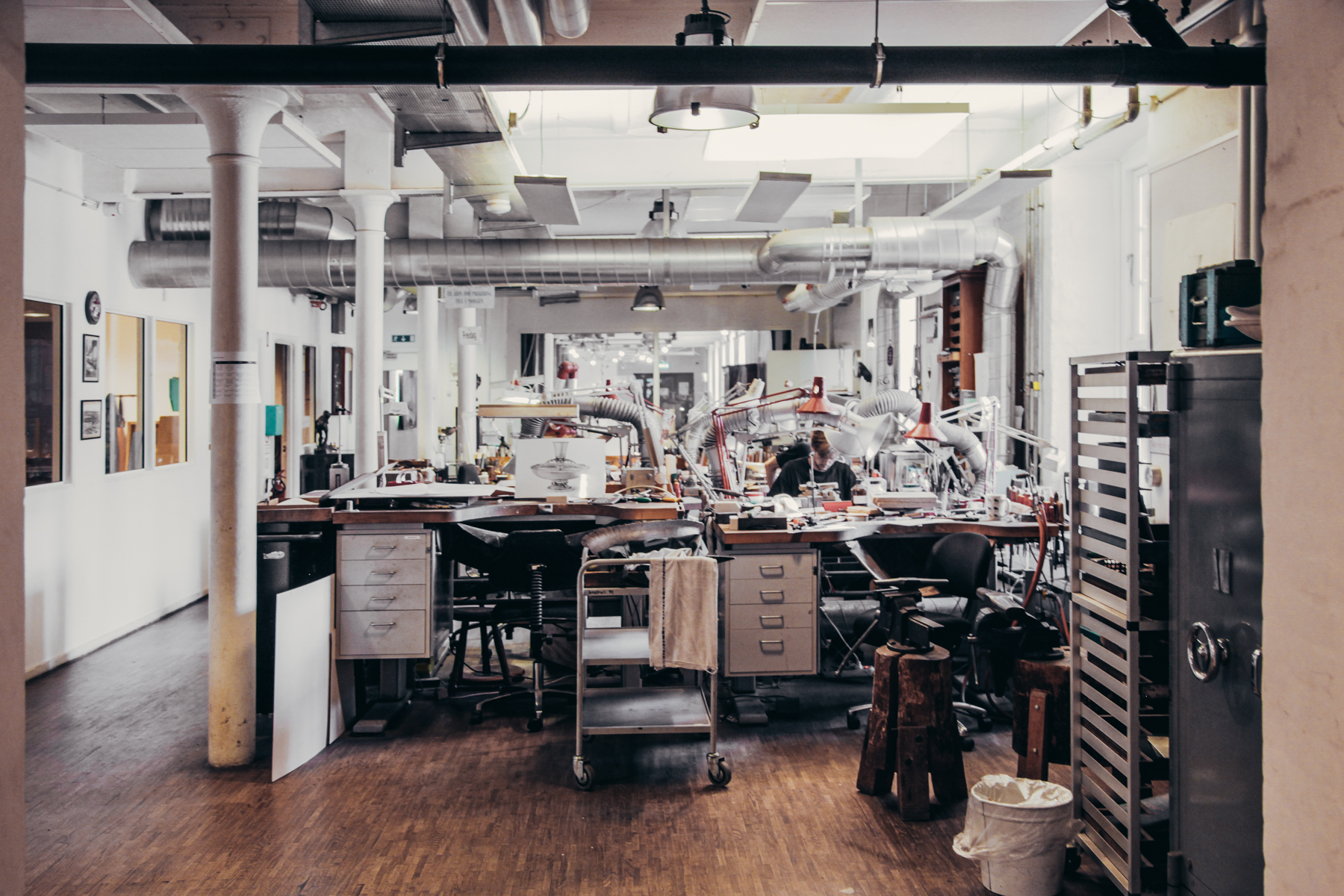 |
|
 |
 |
Want to see more of Georg Jensen? Check out our tour of their historic archive.

